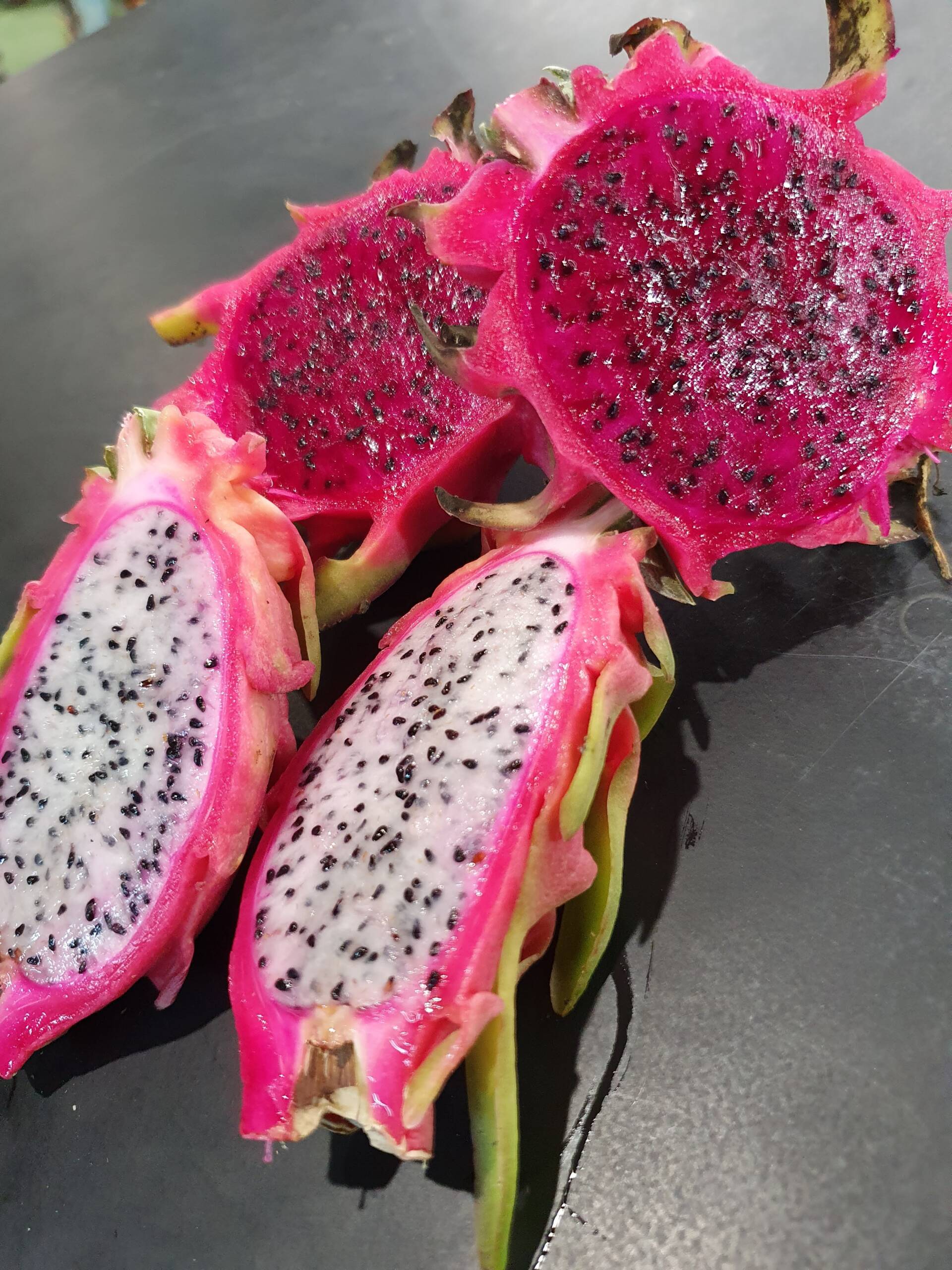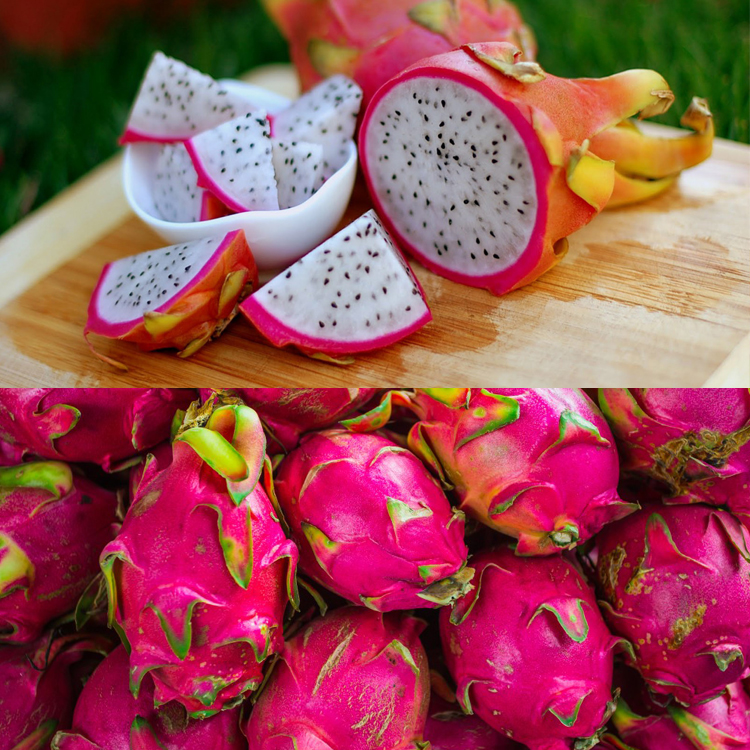Is it possible that a fruit could be both visually stunning and a powerhouse of nutrition? The Dragon Fruit, with its vibrant pink skin and unique appearance, not only captivates the eye but also boasts a treasure trove of health benefits that make it a worthy addition to any diet.
Originating from Central America, particularly Mexico, the pitaya, or dragon fruit, has earned its place among the most exotic and sought-after fruits globally. Its striking exterior, characterized by bright pink skin and green scales, immediately sets it apart from other fruits. This captivating appearance has contributed significantly to its popularity, transforming it into a staple in health food stores and a favorite ingredient for culinary enthusiasts.
| Feature | Details |
|---|---|
| Common Names | Dragon Fruit, Pitaya, Strawberry Pear |
| Origin | Central America (Mexico), now cultivated globally in tropical and subtropical regions |
| Appearance | Bright pink skin with green scales; oval shape |
| Flesh Colors | White, red, or purple, speckled with small black seeds |
| Flavor Profile | Mildly sweet, often compared to a blend of kiwi and pear |
| Nutritional Highlights | High in Vitamin C, antioxidants, fiber, and minerals like magnesium |
| Health Benefits | Boosts immune system, aids iron absorption, improves skin health, aids digestion, and may help with weight management |
| Culinary Uses | Eaten fresh, added to smoothies, juices, salads, and desserts |
| Cultivation | Grows on a cactus plant, prefers well-drained soil and a slightly acidic pH |
| Where to Find More Information | Healthline |
But what exactly is dragon fruit, and what makes it so special? The fruit, also known as pitaya or strawberry pear, is a tropical fruit that thrives on a cactus plant. These plants, belonging to the Hylocereus genus, are native to Central America, with Mexico often credited as its origin. Today, the dragon fruit is cultivated in various regions, including Southeast Asia, Europe, the United States, and Australia, showcasing its adaptability and the global demand for this unique fruit.
The exterior of the dragon fruit is a feast for the eyes. Its vibrant pink skin, adorned with green scales, gives it a fantastical appearance, hence the name "dragon fruit." The oval shape and the contrasting colors make it stand out in any fruit aisle. However, the real magic unfolds when you cut it open.
Inside, the flesh can range in color from white to red or purple, all dotted with tiny black seeds. The taste is generally mild, offering a refreshing sweetness often compared to a combination of kiwi and pear. The texture is slightly crunchy, thanks to the seeds, which are entirely edible.
Beyond its striking appearance and delightful taste, the dragon fruit is a nutritional powerhouse. It's packed with essential nutrients and offers various health benefits, making it a valuable addition to a balanced diet. The fruit's high vitamin C content and abundance of antioxidants are particularly noteworthy, as they are crucial for bolstering the immune system and combating free radicals.
The vitamin C present in dragon fruit also helps the body absorb and utilize iron effectively, a critical function for overall health. A 100-gram serving of dragon fruit provides a significant amount of nutrients, including carbohydrates, fiber, and various vitamins and minerals. These nutrients support various bodily functions and contribute to overall well-being.
The dragon fruit's high water content and fiber content contribute to digestive health. Fiber helps regulate bowel movements, prevents constipation, and promotes a healthy gut. Furthermore, the fruit is a good source of magnesium, an essential mineral involved in hundreds of biochemical reactions in the body, including nerve function, blood sugar control, and blood pressure regulation.
The health benefits of dragon fruit are extensive. Its rich antioxidant content helps prevent diseases, while its properties contribute to improved skin health. Additionally, dragon fruit can help manage anemia due to its iron content, and it can potentially aid in weight management due to its low-calorie density and high fiber content.
The versatility of dragon fruit extends to its culinary applications. It can be enjoyed fresh, sliced, or diced. It is a popular addition to smoothies, juices, and fruit salads, bringing not only flavor but also an appealing visual element. Dragon fruit also makes a refreshing ingredient in desserts and can be used to create unique and exotic dishes.
The cultivation of dragon fruit is relatively straightforward. The plant prefers well-drained soil with a slightly acidic pH (between 6 and 7). Providing appropriate growing conditions is crucial for successful fruit production, as is ensuring the plants receive adequate sunlight and water.
In the realm of health and wellness, the dragon fruit shines. It's a perfect choice for those who are conscious of their health, seeking ways to enrich their diets with nutrient-rich and delicious fruits. Its combination of visual appeal, taste, and nutritional value makes it an attractive fruit for health-conscious individuals and food enthusiasts alike.
The fruit is not only appealing in its fresh form but can also be found in various processed forms, like pitaya powder, ideal for beverages and food. This demonstrates the fruit's flexibility and the many ways it can be enjoyed.
The fruit's composition is noteworthy. The presence of phenolic compounds, betacyanins, polysaccharides, and terpenes provides additional health advantages. Betacyanins, for example, are responsible for the red color of the fruit and have antioxidant properties.
When it comes to energy, a whole dragon fruit, approximately 100 grams, contains roughly 57 calories, making it a low-calorie fruit that supports weight management. It is the perfect healthy option for a tasty treat.
The appeal of the dragon fruit extends beyond its nutritional benefits. Its striking appearance and exotic origins make it an appealing fruit in the culinary world. The name itself, "dragon fruit," adds an element of fascination and mystery, making it even more enticing. This makes dragon fruit a captivating addition to various cuisines.
The cultivation of dragon fruit has expanded significantly from its origins in Central America. Today, it is grown in a wide array of countries, including Mexico, China, and Vietnam. This global cultivation highlights the increasing demand and popularity of this fruit.
The dragon fruit's popularity is evident in the growing interest in its medicinal properties. Some studies suggest that it could help prevent kidney stones and regulate blood sugar levels. While more research is needed, these potential benefits further increase the appeal of dragon fruit.
As a part of the cactus family, dragon fruit shares some unique characteristics with other members of the family. The flowering process of the dragon fruit plant is particularly noteworthy. Its blooms are large and beautiful and only open at night, making the pollination process an interesting spectacle. The fruit formation is equally fascinating, leading to the development of the vibrant fruits we know and love.
In conclusion, the dragon fruit is more than just an exotic fruit; it's a nutritional powerhouse with a unique appearance, a refreshing taste, and numerous health benefits. From its origins in Central America to its global cultivation and diverse culinary applications, dragon fruit has captivated the world. Its high vitamin C content, abundance of antioxidants, and fiber-rich composition make it a worthy addition to any health-conscious diet. The dragon fruit's appeal extends beyond its nutritional value; its striking visual presence and intriguing name make it a captivating fruit. Dragon fruit is a testament to the fact that healthy eating can also be exciting and visually appealing.


